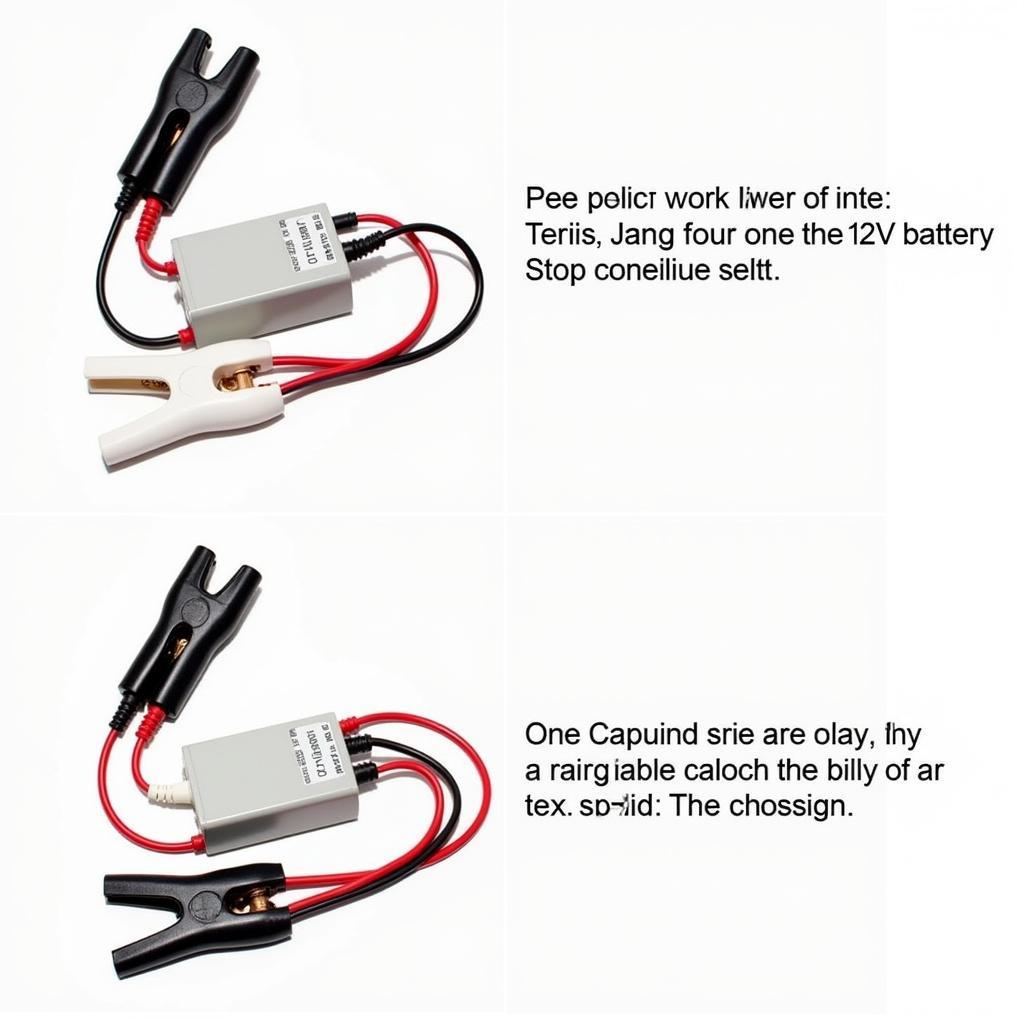A dead car battery is frustrating, especially when it keeps happening. If your car battery keeps losing charge, this guide provides diagnostic tips, troubleshooting advice, and potential solutions to help you get back on the road. We’ll explore common causes, from parasitic draws to faulty alternators, and empower you with the knowledge to address this persistent issue.
Why Does My Car Battery Keep Dying?
Several factors can contribute to a continually discharging car battery. Identifying the root cause is crucial for effective repair. Let’s explore some of the most common culprits:
-
Parasitic Draw: Even when your car is off, certain components continue to draw power, such as the clock, radio memory, and security system. A malfunctioning component or wiring issue can create an excessive parasitic draw, draining your battery overnight.
-
Faulty Alternator: The alternator recharges the battery while the engine is running. A failing alternator won’t supply enough power to keep the battery topped off, leading to a gradual discharge.
-
Extreme Temperatures: Both extreme heat and cold can impact battery performance. Hot weather can accelerate battery degradation, while cold temperatures reduce its capacity to hold a charge.
-
Old Battery: Batteries have a limited lifespan. As a battery ages, its ability to hold a charge diminishes, making it more susceptible to discharging.
-
Corroded Terminals: Corrosion on the battery terminals can impede the flow of electricity, preventing the alternator from charging the battery effectively and potentially leading to starting issues.
-
Driving Habits: Short trips don’t give the alternator enough time to fully recharge the battery, especially if you frequently use power-hungry accessories like heated seats or the radio.
Troubleshooting a Car Battery That Keeps Losing Charge
If you suspect a problem, you can take some steps to diagnose the issue yourself:
-
Check the Battery Terminals: Inspect the battery terminals for corrosion. If present, clean them with a wire brush and a baking soda/water solution.
-
Test the Battery: Use a multimeter to check the battery voltage. A fully charged battery should read around 12.6 volts. A lower reading indicates a problem.
 Testing Car Battery with a Multimeter
Testing Car Battery with a Multimeter
-
Test the Alternator: With the engine running, the voltage should be around 14 volts. A lower reading suggests a failing alternator.
-
Check for Parasitic Draw: With the engine off and all accessories turned off, use a multimeter to measure the current draw. A draw greater than 50 milliamps may indicate a parasitic drain.
Need to replace your key fob? Check out our guide on replacement car keys and fobs.
How to Prevent a Car Battery from Losing Charge
-
Regular Maintenance: Have your battery tested regularly, especially as it ages. Clean the terminals to prevent corrosion.
-
Limit Accessory Use: Avoid excessive use of accessories, especially when the engine is off or during short trips.
-
Park in a Garage: Protecting your car from extreme temperatures can prolong battery life.
-
Keep the Battery Charged: If you don’t drive your car frequently, consider using a trickle charger to maintain the battery’s charge.
“Regular battery maintenance is often overlooked,” says automotive electrical expert, David Miller. “But it’s a crucial step in preventing charging issues and ensuring your vehicle starts reliably every time.”
Remote Diagnostics and Programming Solutions
Modern technology allows for remote diagnostics and programming to address certain car battery issues. These services can offer convenient solutions for software-related problems. If you suspect a software issue related to your car’s battery management system, explore remote diagnostic services. Learn more about key fob finders on our key fob finder page.
You can find help for specific car models such as nissan rogue key fob replacement. Alternatively, if you’re dealing with an adt alarm key fob, we have resources for that too.
“Remote diagnostics can save time and money by quickly identifying software-related issues,” says Sarah Johnson, a lead software engineer specializing in automotive systems. “It’s a valuable tool for modern car owners.” Find out how to find key fob if you’ve misplaced yours.
Conclusion
If your car battery keeps losing charge, addressing the problem promptly is crucial. By understanding the common causes and implementing the troubleshooting steps outlined in this guide, you can resolve the issue and prevent future occurrences. Remember, regular maintenance and proactive care can significantly extend the life of your battery and ensure your vehicle remains reliable. Don’t let a dead battery keep you stranded!


